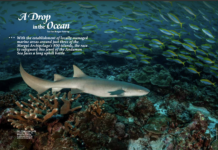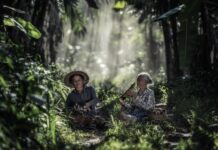
Photos and Text by Mohammad Rakibul Hasan
A coastal community in Bangladesh battles salinity intrusion on the front line of climate change
Global warming has had more severe an impact on certain countries than others. Bangladesh is one such country suffering the disproportionate effects of global warming; it is one of the most vulnerable countries to climate change. The country boasts incredibly diverse ecosystems, such as that offered in the Sundarbans – the largest single block of tidal halophytic mangrove forest in the world – and these rich natural environments provide people living in the coastal lowlands with their livelihoods. The Sundarbans, covering major parts of the Satkhira and Khulna districts, act as something of a shock absorber when natural disasters hit the coastal regions, affording a degree of protection to the communities against the surge of tidal waves and the flooding brought on by cyclones.

But the low-lying coastal areas of Bangladesh face the threat of submergence due to sea level rise as the planet’s temperature continues to warm. This most important ecosystem of the country will be lost if there is a one-metre rise in sea level.

The situation is made worse by the increase in natural disasters such as cyclones and floods. Two recent cyclones, Sidr in 2007 and Aila in 2009, devastated the coastal territories of Satkhira, Barguna, Patuakhali, Khulna and Bagerhat. Gabura, a region adjacent to the Sundarbans in the Satkhira district, stands as a testament to the dreadful effects of climate change in the region. Cyclone Aila hit Gabura and claimed 330 lives; 8,208 people were declared missing. The storm obliterated natural resources and shelters, leaving one million people homeless. An estimated 20 million people were at risk of post-disaster diseases due to Aila, with damages totalling USD552.6 million.
For the rest of this article (Asian Geographic No.123 Issue 1 /2017 ) and other stories, check out our past issues here or download a digital copy here
The 25th anniversary of the largest and longest running dive show, Asia Dive Expo (ADEX) is set to occur on the 11-14th April 2019. Centred on the theme – Plastic free Future, ADEX is more than just a dive show with its commitment to the environment. Among an exciting lineup of programs, attendees can look forward to a Future Forward Series of Panel Discussion on the Single-Use Plastic Conundrum in Asia, on 13th April.
So join us at the event, get inspired and for all you know, you might just liberate the inner diver in you! More details of the event here.











